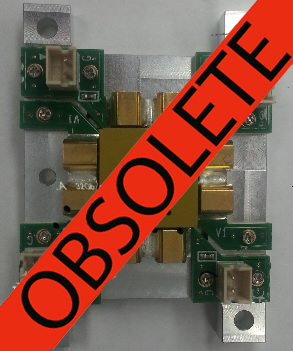Product Details
This part is now obsolete, and has been superseded by the ASNT5153-MOD which can be viewed here:

Figure 1. Functional Block Diagram
The temperature stable and broadband ASNT5151-MOD SiGe IC can be utilized as either a high isolation selector switch or a high speed 2:1 serializer and is intended for use in high-speed measurement / test equipment. When employed as a selector switch, the IC can route one of its differential data input signals d0p/d0n or d1p/d1n to its differential output qp/qn while effectively blocking the other data input. Selection of a specific data input is achieved through appropriate external DC biasing of the selector signal inputs cp/cn. As a 2:1 serializer, the IC can receive high speed input data signals into d0p/d0n and d1p/d1n and effectively multiplex them into a double frequency rate NRZ output data signal by using a high speed input clock signal on its selector signal inputs cp/cn. The common-mode voltage levels of the input clock signals can be adjusted using the analog control inputs dcp/dcn.
The part’s I/Os support the CML logic interface with on chip 50Ω termination to vcc and may be used differentially, AC/DC coupled, single-ended, or in any combination. In the DC-coupling mode, the input signal’s common mode voltage should apply with the specifications shown within the electrical characteristics section within the part’s datasheet. In the AC-coupling mode, the input termination provides the required common mode voltage automatically. The differential DC signaling mode is recommended for optimal performance.
